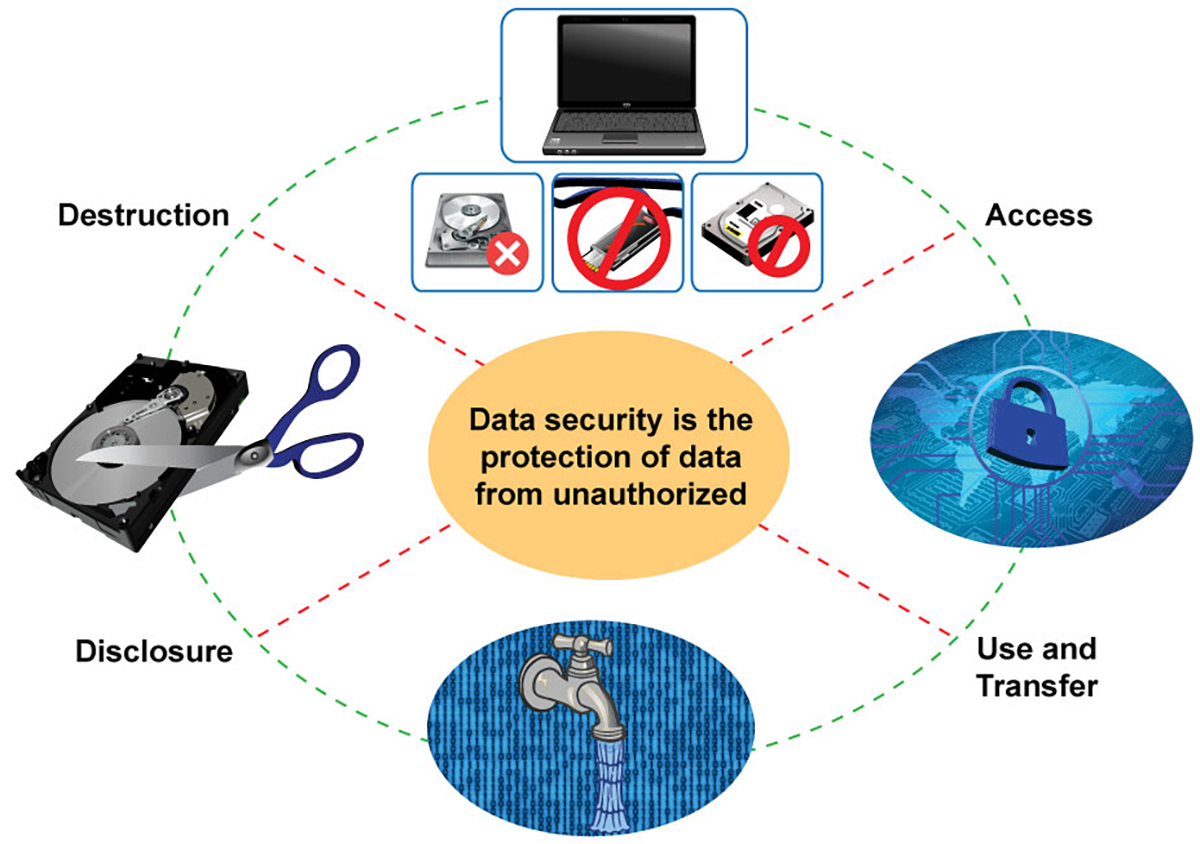Best Practices for Data Destruction to Strengthen Your Cyber Security Framework
Wiki Article
Discovering the Importance of Data Devastation in the Context of Computer System Protection Providers and Protecting Confidential Information
In an era where information violations are increasingly typical, the relevance of effective information devastation can not be overstated. What methods can companies carry out to boost their information damage methods?Recognizing Data Destruction
Data damage is a critical component of computer system safety and security that entails the long-term removal of data from storage space tools to stop unauthorized accessibility and potential information breaches. In an increasingly digital landscape, companies encounter enhanced threats related to sensitive details being improperly accessed or exploited. Reliable information destruction safeguards against these hazards, ensuring that private dataâEUR" such as customer details, copyright, and economic recordsâEUR" can not be recuperated after disposal.Understanding the significance of information damage extends beyond simple conformity with governing and legal structures; it is essential for keeping business integrity and trust. When data is incorrectly managed or inadequately ruined, the consequences can be extreme, including financial loss, reputational damage, and lawful responsibilities.

Techniques of Information Eradication

One common method is information wiping, which entails overwriting existing data with random patterns numerous times. This strategy provides the initial data irretrievable, making it a prominent selection for companies seeking to shield private information.
An additional technique is degaussing, which makes use of a powerful electromagnetic field to disrupt the magnetic domain names on storage tools, properly eliminating the data. This technique is especially effective for magnetic media but is not appropriate to solid-state drives.
Physical damage is another robust approach, involving the shredding or crushing of storage tools. This technique assurances that information recovery is basically difficult, making it perfect for highly sensitive details.
Lastly, file encryption can function as a corresponding method to information eradication. By securing data prior to deletion, companies can include an extra layer of safety and security, guaranteeing that also if residues are recovered, they remain hard to reach without the decryption key. Each method must be chosen based upon the level of data level of sensitivity and the specific protection demands of the organization.
Legal Compliance and Information Safety And Security
Organizations need to browse an intricate landscape of legal needs connected to data protection, specifically after applying methods of data elimination. Numerous regulations, such as the General Information Security Law (GDPR) and the Medical Insurance Portability and Responsibility Act (HIPAA), impose strict guidelines on just how organizations must get rid of and handle of delicate information. Failure to adhere to these guidelines can result in substantial legal consequences, consisting of substantial penalties and reputational damage.Data website link devastation processes have to be meticulously documented to demonstrate conformity with relevant regulations and standards. This documentation not only offers as proof of adherence to lawful responsibilities yet likewise highlights a commitment to safeguarding delicate info. Organizations should additionally establish clear policies concerning information retention and damage timelines, making sure that data is not held longer than needed.

Furthermore, normal audits and evaluations of information destruction techniques are important to preserve conformity and adjust to progressing legal frameworks (data destruction). By proactively dealing with legal requirements, organizations can reduce risks linked with information breaches and show their commitment to data security. Inevitably, focusing on lawful compliance in information from this source damage processes is not simply a governing responsibility, yet an essential element of a robust data protection strategy
Influence On Company Reputation
The track record of an organization can be substantially influenced by its strategy to data damage and administration. In today's digital landscape, where data violations can occur at any kind of moment, the failure to correctly get rid of delicate info can result in serious repercussions. Organizations that inadequately handle data damage threat exposing private client information, which not just violates privacy legislations however likewise deteriorates depend on amongst clients and stakeholders.A damaged track record can lead to lowered customer commitment, as customers end up being hesitant to engage with a company that has demonstrated carelessness in shielding their data. Moreover, adverse attention surrounding an information breach can have a long-term effect, as potential customers could be hindered by the regarded lack of safety. This can lead to a straight decline in earnings and market share.
In addition, businesses that focus on data destruction as component of their safety and security approach can enhance their credibility by showcasing their dedication to guarding sensitive details. By taking on stringent data management practices, organizations can not only reduce risks but likewise position themselves as trustworthy entities in their respective sectors, therefore reinforcing their overall brand name picture.

Finest Practices for Secure Disposal
Executing ideal practices for safe and secure disposal of information is necessary for reducing risks related to information violations and guaranteeing compliance with personal privacy policies. Organizations should take on an extensive information disposal plan that details procedures for both electronic and physical data devastation.For physical information storage space tools, such as difficult drives, shredding or degaussing is recommended to stop data recovery. Additionally, organizations need to preserve a chain of guardianship documentation during the disposal procedure, making sure liability and traceability of disposed things.
For electronic information, making use of software application that sticks to sector standards for information wiping is vital. This software application should overwrite existing data several times, making healing essentially impossible. It is additionally important to confirm the effectiveness of the information destruction procedure via audits or third-party evaluations.
Training employees on protected disposal methods includes one more layer of safety, as human error can typically cause data direct exposure. On a Visit Your URL regular basis updating and evaluating disposal policies ensures placement with advancing guidelines and technical developments. By implementing these ideal practices, organizations can considerably minimize the danger of unauthorized data accessibility and enhance their general data defense method.
Conclusion
Finally, information devastation is an essential aspect of computer system protection services that ensures the defense of secret information from unauthorized gain access to. Applying effective techniques of data obliteration, adhering to lawful compliance, and recognizing the effect on service credibility are crucial components of an extensive information safety and security technique. By embracing finest methods for secure disposal, companies can cultivate trust with customers and guard sensitive data, eventually adding to a more safe electronic landscape.In an era where data violations are significantly common, the importance of reliable information devastation can not be overemphasized.Information destruction is a crucial component of computer security that entails the long-term elimination of data from storage tools to avoid unauthorized access and possible data violations. Organizations ought to also establish clear plans pertaining to data retention and damage timelines, making sure that information is not held longer than essential.
By proactively dealing with legal requirements, organizations can reduce threats associated with information breaches and demonstrate their commitment to information protection (data destruction). Ultimately, focusing on legal conformity in data devastation procedures is not simply a governing commitment, yet a fundamental element of a durable information security technique
Report this wiki page